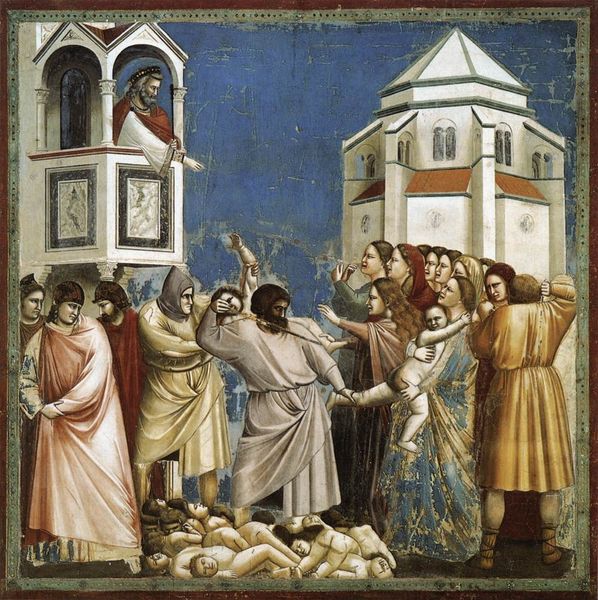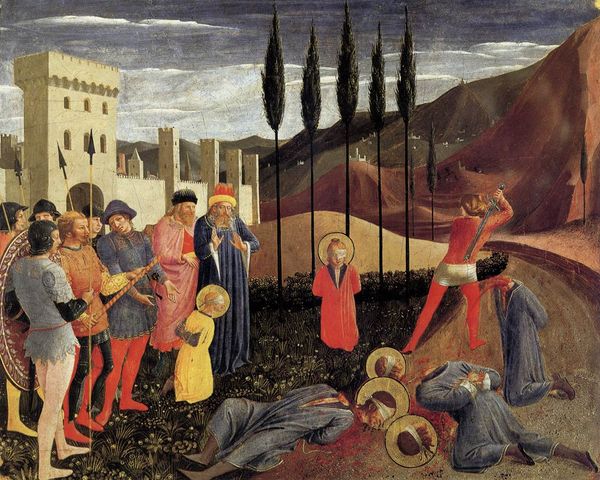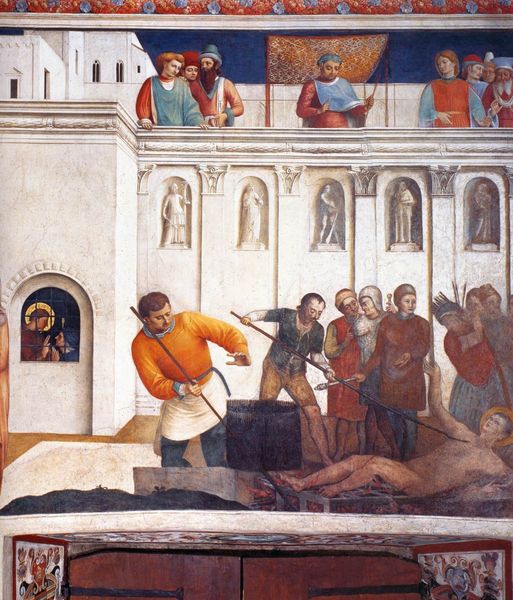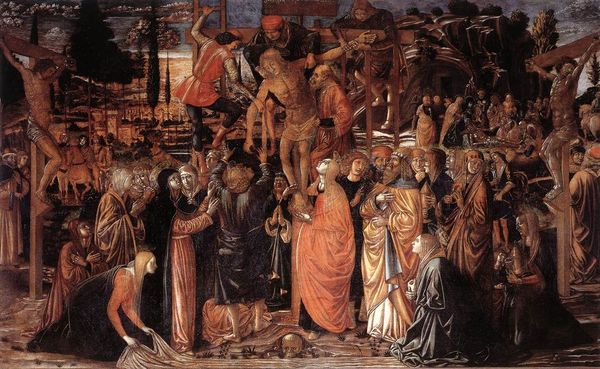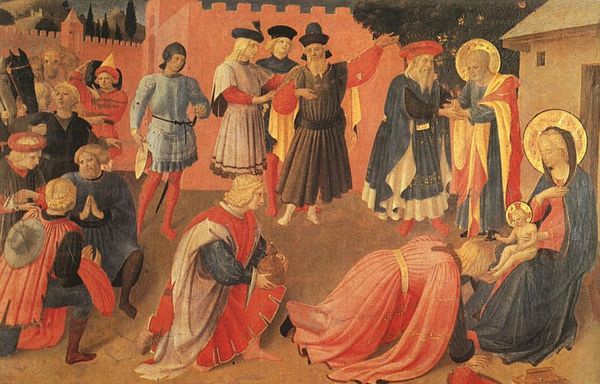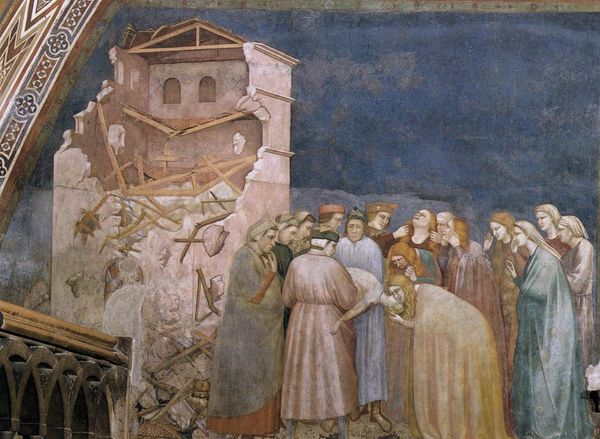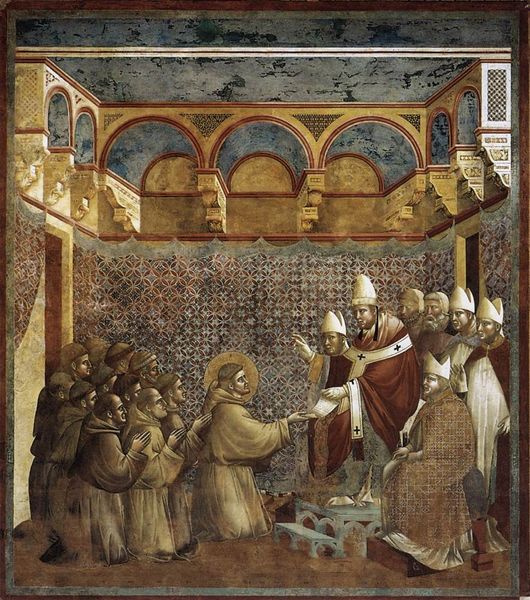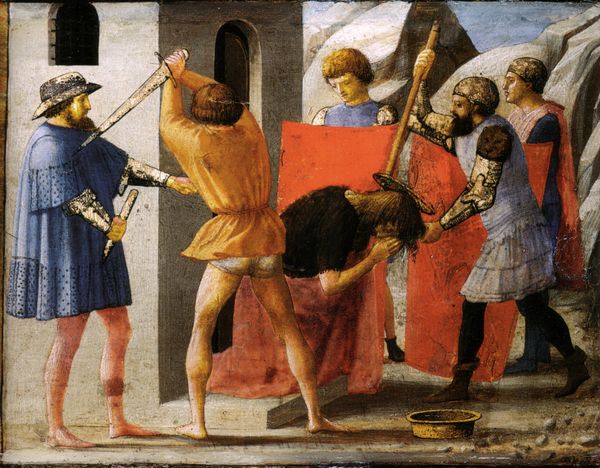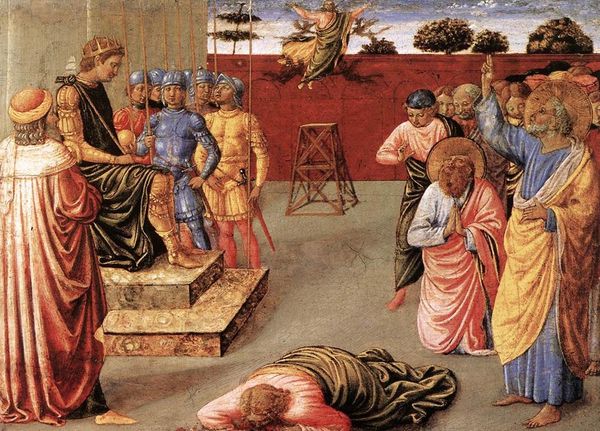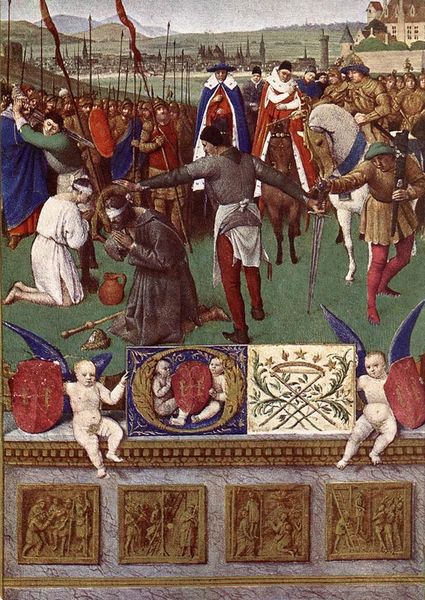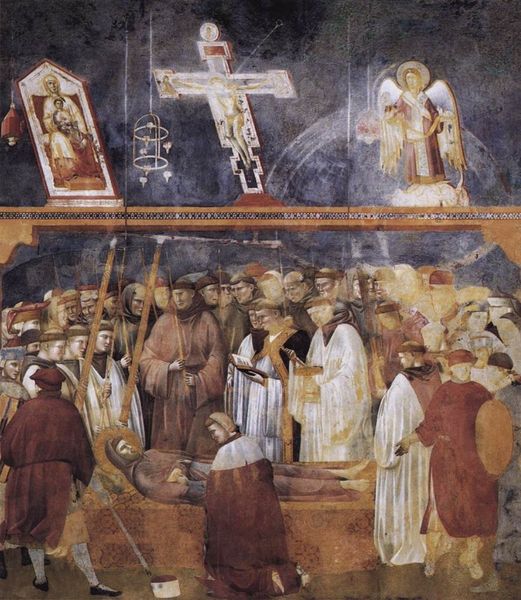
painting, oil-paint, fresco
#
portrait
#
medieval
#
narrative-art
#
painting
#
oil-paint
#
gothic
#
painted
#
figuration
#
form
#
fresco
#
oil painting
#
christianity
#
line
#
history-painting
#
academic-art
#
italian-renaissance
Copyright: Public domain
Curator: Giotto’s fresco, "The Massacre of the Innocents," painted around 1320, is housed in the Basilica of Saint Francis of Assisi. The composition strikes me as exceptionally well-organized. Editor: It’s harrowing. That raw emotion just explodes from the scene, a mother’s desperate attempt to shield her child. Curator: Note how Giotto employs strong horizontal lines for the ground plane and the bodies of the slain infants. This provides a stark visual base, doesn't it? It creates a foundation upon which he builds the chaotic energy of the rest of the composition. Editor: Absolutely. That visual grounding is key because the image is a visceral representation of collective trauma. This event, as part of the nativity narrative, has haunted our collective consciousness for centuries. Look at the way Herod is portrayed on the left: isolated, almost gleeful. Curator: His architectural setting definitely isolates him; that perspectival distortion enhances his visual and moral distance from the carnage. It serves the structure by dividing and framing each key component: Herod and the soldiers, the mothers. And do you observe Giotto’s figures, so weighty? Such volumes of despair? Editor: Indeed, each gesture carries a specific cultural meaning, wouldn’t you say? Raising of hands suggests both appeal to the divine and futile opposition against tyrannical forces. It is also a symbol of profound grief, connecting this scene to a universal experience of loss. Curator: It's as if he is composing these heavy emotions of guilt and innocence directly onto the surface. He eschews intricate surface detailing for simplified shapes and colour masses, to increase narrative legibility. Editor: And there are echoes across centuries, aren't there? Think of similar images throughout history showing state sanctioned or revolutionary killings. They pull at something primal within us. Curator: This piece proves again how the artist, by harnessing form and structure, is able to elicit our immediate, sustained response. Editor: Agreed. Giotto successfully created a symbol not just of one biblical story, but one that signifies enduring human suffering.
Comments
No comments
Be the first to comment and join the conversation on the ultimate creative platform.
